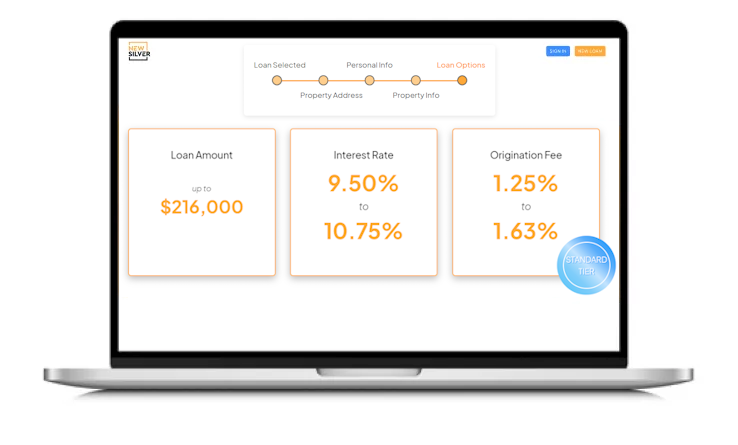Quick Overview
Multifamily real estate involves purchasing properties with multiple units (e.g., duplexes, apartment buildings) to generate rental income. These properties provide consistent cash flow, portfolio diversification, and tax advantages. Small multifamily homes (2-4 units) are easier to finance with conventional loans, while larger properties require commercial loans but offer higher rental income potential.
Key benefits include steady income, risk distribution, and appreciation. Challenges include high upfront costs, market risks, property management demands, and stiff competition. Investors need solid financing, market research, and a reliable team to succeed in this space.
Key Topics
What Is Multifamily Real Estate Investing?
Multifamily investing in residential real estate offers a great opportunity for investors to generate consistent passive income. There are several types of residential real estate investments to choose from, such as student housing, but a popular option is multifamily properties, which enable investors to earn multiple rental income streams from a single investment.
Multifamily properties are classified as properties where there are multiple housing units. There are 2 types of multifamily properties, small and large. Small multifamily properties include duplexes, triplexes, and fourplexes, and these are typically easier to get financing for, because they can qualify for conventional residentials loans even for an investment property. Large multifamily properties are apartment buildings with five or more units. These can be harder to get financing for, due to the fact that they’re much larger properties, however they have the potential to generate a larger cash flow.
Multifamily investing is the practice of purchasing and managing residential properties with many units, by renting them out to tenants. While investing in multifamily properties requires a lot more capital, time and property management, it can be more rewarding in terms of generating consistent rental income each month.

How Do You Get Started With Multifamily Real Estate Projects?
Step 1: Get Your Financial Ducks in a Row 💸
If you’re ready to dive into multifamily real estate investing, your first step is to assess whether you qualify for a mortgage on multifamily properties and if your financial situation aligns with this investment strategy. Your loan eligibility will depend on the type of loan you pursue.
Down Payment
Multifamily properties typically require more capital upfront compared to single-family investment property. This means you’ll need to budget for a larger down payment, in addition to other costs such as closing fees and potential repairs. Generally, expect a down payment of around 20% of the property’s purchase price, though this can vary depending on the lender.
Credit Score
While some loans accept credit scores as low as 580, a score above 620 is usually a safer bet for conventional loans. Most mortgage lenders will require a score in this range to qualify.
Debt-to-Income (DTI) Ratio
Your debt-to-income (DTI) ratio measures the percentage of your gross monthly income that goes toward paying debts. Essentially, the less you’re allocating to debt payments and the more income you have, the more favorable your DTI will appear to lenders.
When evaluating your mortgage application for a multifamily property, lenders will examine your income, cash flow, and recurring debts like car payments, student loans, and existing mortgages. They’ll also consider minimum payments on revolving credit, such as credit cards.
It’s generally recommended to keep your DTI below 43%, but exact requirements can vary depending on the type of loan you’re applying for.
Choosing a Loan
The type of multifamily property you select will determine the loan options available to you. It’s crucial to choose a loan that aligns with your financial situation and investment goals. Common loan options for multifamily real estate include conventional loans, FHA loans, hard money loans, VA loans and commercial loans. We’ll outline these in more detail later.
Step 2: Find the Right Location 🔍
To maximize your chances of success, focus on areas with strong demand for rental properties, positive population growth, and robust employment opportunities. Conduct thorough research on local real estate market trends to identify areas where multifamily properties are likely to perform well. Understanding these trends is crucial for making informed decisions and ensuring your investment property is in the right location.
Step 3: Build a Reliable Team 🤝
Before searching for a multifamily property to invest in, it’s essential to assemble a reliable team. This team should include a property manager, lender, real estate agent, and attorney.
Real Estate Agent: Will help you find the ideal property that fits your investment goals.
Lender: Will provide the financing you need to close the deal.
Property Manager: Will handle the day-to-day operations of the units, ensuring the property runs smoothly.
Real Estate Attorney: Can assist with contract reviews, legal compliance, and resolving any issues that may arise during or after the transaction.
Once your team is in place, you’re ready to begin your search for the right multifamily property to invest in.
The Main Types of Multifamily Investment Properties
Type 1: Duplex, Triplex, or Fourplex

These properties consist of two, three, or four units within a single building. They are an excellent starting point for investors new to multifamily real estate, as they qualify for residential loans and are generally more affordable than larger buildings. Another advantage is that they allow for owner occupancy, meaning investors can “house hack” by living in one unit while renting out the others, helping to offset mortgage payments.
Type 2: Townhouse

Townhouses are groups of individually owned or rented homes that share walls but have separate entrances. While managing multiple units in a townhouse complex can be more labor-intensive, these properties often come with more space and better amenities, which can justify higher purchase prices.
Type 3: Apartment Complex

Apartment complexes come in various styles, each offering unique investment opportunities:
Garden Apartments: These low-rise buildings, typically 3-4 stories, appeal to tenants seeking a balance between indoor living and access to outdoor spaces. They are often found in suburban settings and offer lower development costs.
Mid-Rise Apartments: With 5-12 stories, mid-rise complexes provide significant rental income potential due to their larger number of units and the high demand for urban or suburban apartment living.
High-Rise Apartments: These buildings, with more than 12 stories, often cater to luxury tenants by offering upscale amenities. However, they require a substantial upfront investment and involve more complex property management due to their size and scale.
Benefits of Multifamily Real Estate Investing
Multifamily real estate offers investors numerous opportunities to generate steady income, take advantage of tax benefits, and more. Let’s explore both the benefits and potential drawbacks of this investment strategy to get a full understanding of what it entails.
Benefit 1: Expanding Your Investment Portfolio
Multifamily investing allows investors to diversify and expand their real estate investment portfolio by investing in multiple-unit properties rather than single-family homes. According to many experts, expanding or scaling a real estate investment portfolio is a key element of long-term success in this area. Multifamily investments enable investors to grow their holdings more quickly and act as a hedge against market volatility, offering more stability during times of economic uncertainty.
Benefit 2: Generating Steady Income
Multifamily properties generate rental income from multiple units, which means as long as the property is occupied, investors can rely on a consistent income stream each month. This predictable cash flow provides financial security and doesn’t require a hands-on approach, making it an attractive option for passive investors.
Benefit 3: Tax Advantages
Multifamily investing comes with several tax benefits that can reduce taxable income and improve overall returns. These include deductions for depreciation, mortgage interest, property taxes, maintenance, and insurance costs. While these deductions vary based on the property’s size and income potential, they can be substantial, especially for larger properties.
Benefit 4: Property Appreciation Potential
Real estate generally appreciates in value over time, and multifamily properties are no exception. This appreciation can lead to significant returns when the property is sold, allowing investors to recoup any expenses incurred for repairs or improvements—often with additional profit.
Benefit 5: Risk Distribution
With multiple units, multifamily properties spread the investment risk across several tenants. If one unit is vacant, the others can continue generating income, providing a financial cushion. This distribution of risk makes multifamily real estate more resilient, as it can remain profitable even with vacancies or tenant turnover.

Drawbacks of Multifamily Real Estate Investing
While multifamily real estate offers numerous benefits, it’s equally important to recognize the challenges involved. Being aware of these potential drawbacks allows investors to better prepare and mitigate risks where possible.
Drawback 1: Market Risks
Multifamily investing is influenced by various market risks. Factors such as local rental demand, population growth, vacancies, the supply of competing properties, and current rental rates can all impact an investor’s net operating income. Broader economic issues like unemployment, inflation, and fluctuating interest rates also pose risks. These variables can affect both property values and cash flow. To minimize risk, investors should thoroughly research the market, location, and economic conditions before making an investment.
Drawback 2: Overleveraging
One significant financial risk is overleveraging, where investors take on too much debt relative to the property’s net operating income potential. If the property doesn’t generate enough monthly rental income to cover loan payments and operating expenses, it could lead to financial strain. In extreme cases, overleveraging may result in loan defaults and foreclosure. To avoid this, investors should carefully assess the property’s cash flow and maintain a conservative debt load.
Drawback 3: Property Management Demands
Managing a multifamily property can be far more complex than handling a single-family home. With multiple tenants, real estate investors must address tenant relations, handle maintenance requests, collect rent, and manage unit turnovers. Larger properties also require regular upkeep of common areas, utilities, and amenities, adding to the complexity. Without proper property management experience, this can quickly become overwhelming.
While hiring a professional property management company can ease the burden, it typically costs between 8% and 12% of the property’s gross rental income. For smaller multifamily properties, some investors opt to self-manage, but this requires a significant time commitment and hands-on involvement.
Drawback 4: Significant Upfront Costs
Multifamily properties generally require more capital upfront than single-family investments. Down payments can range from 15% to 25% of the purchase price, depending on the type of loan and whether the investor plans to live on-site. In addition to the down payment, investors must account for closing costs, property inspections, legal fees, and potential renovations or repairs. Larger properties also come with higher ongoing expenses, such as maintenance, utilities, and property management fees, which can significantly impact cash flow.

How Do You Finance Multifamily Real Estate Properties?
Common loan options for multifamily real estate include:
Conventional loans: Suitable for 2-4 unit properties, these loans are similar to traditional home loans. Depending on whether you plan to live in the property, the down payment may range from 15-25% of the purchase price.
Commercial loans: Required for properties with five or more units, these loans typically come with higher interest rates and larger down payment requirements.
Hard money loans: These are short-term loans often used by investors who don’t qualify for conventional financing. Hard money loans are ideal for quick closings and properties that need improvements.
FHA loans: For first-time buyers, FHA loans allow you to purchase a small multifamily property with as little as 3.5% down if you intend to live in one of the units. FHA loans can also be used for investment properties under certain conditions.
VA loans: Available to eligible veterans, VA loans offer real estate financing with no down payment for a primary residence of up to 4 units.
The Biggest Obstacles To Becoming A Multifamily Real Estate Investor
Investing in multifamily real estate offers substantial opportunities, but it also comes with its own set of challenges. Understanding these hurdles is essential for real estate investors to navigate the market effectively and maximize their success.
Challenge 1: High Investment Costs
One of the primary challenges of multifamily investing is the higher cost of acquisition compared to single-family properties. Multifamily homes typically require a larger down payment and higher overall investment, particularly in desirable locations. Investors may need to secure more capital or explore alternative financing options, such as hard money loans, to cover these costs. While alternative financing can provide flexibility, it often comes with higher interest rates and shorter loan terms, so careful financial planning is crucial.
Challenge 2: Intense Competition
The multifamily sector attracts many experienced real estate investors, making it highly competitive. Multifamily properties are often in high demand, especially in areas with strong rental markets, which can drive up prices and make it harder for new investors to secure deals. To compete, those who are investing in multifamily properties may need to move quickly, offer competitive bids, or even waive certain contingencies. Partnering with professionals who understand the local market can help level the playing field and improve your chances of finding and closing on the right property.
Challenge 3: Limited Property Availability
Multifamily properties are often harder to come by, as many real estate investors hold onto them for long periods due to their income-generating potential. When these properties do become available, they are frequently snapped up quickly, making it difficult for investors to act in time. Being proactive in your property search and working with a network of real estate professionals can help you identify opportunities before they hit the broader market.
Challenge 4: Tenant Management and Turnover
Managing tenants can be more challenging when investing in multifamily properties than in single-family homes, as multiple units mean more tenants to handle. Tenant selection, screening, and retention are crucial for minimizing vacancy rates and ensuring consistent cash flow.
High turnover rates can lead to additional costs for marketing, unit preparation, and repairs. For real estate investors without the time or expertise to manage these responsibilities, hiring a property management company can alleviate much of the burden. While this adds an additional expense, it can help maintain tenant satisfaction and reduce turnover, making it a worthwhile investment in the long run.



